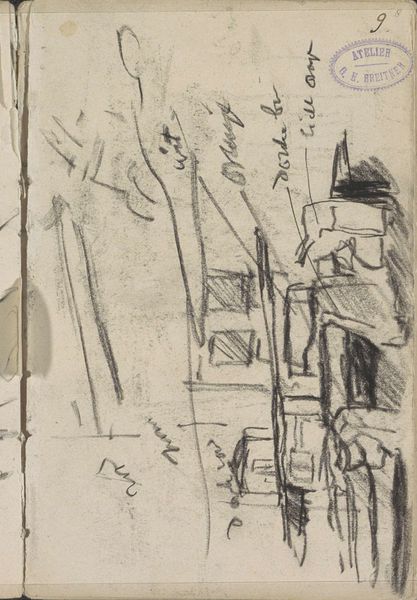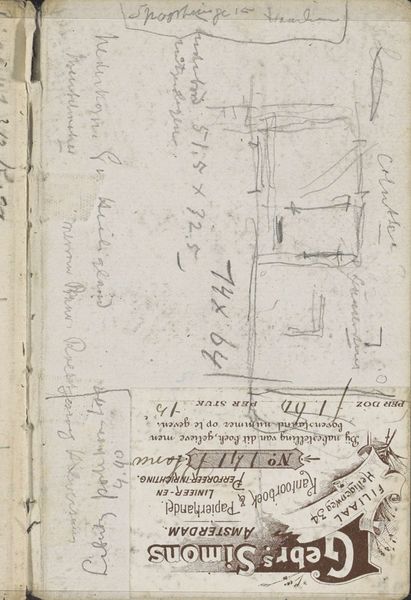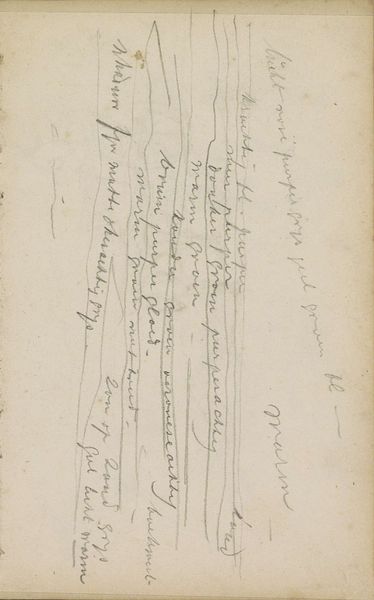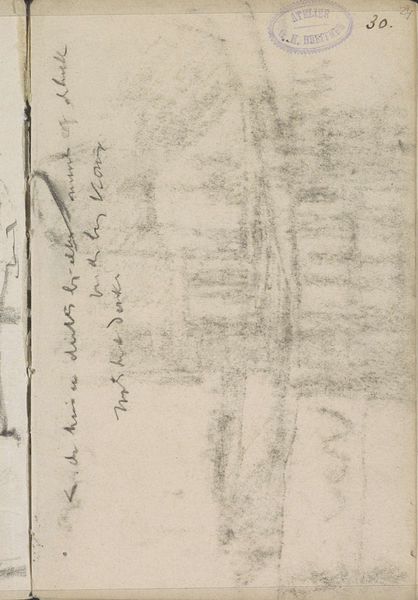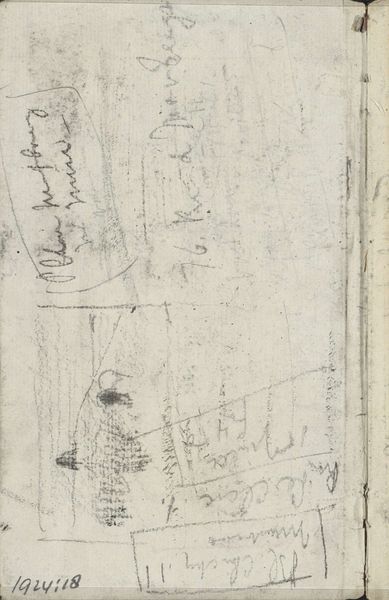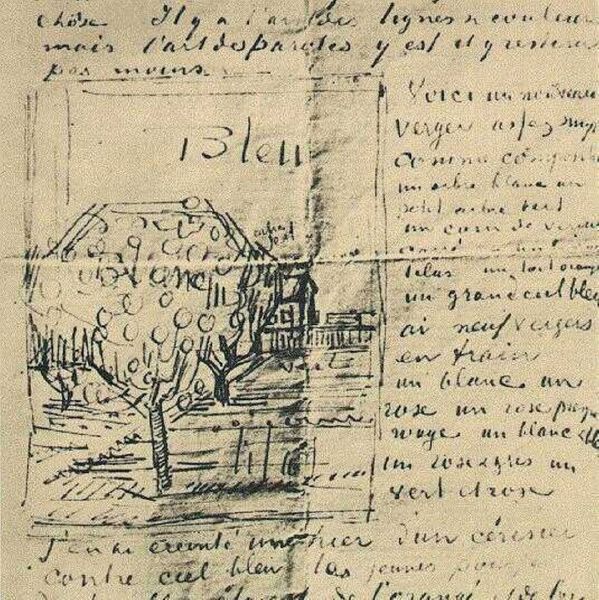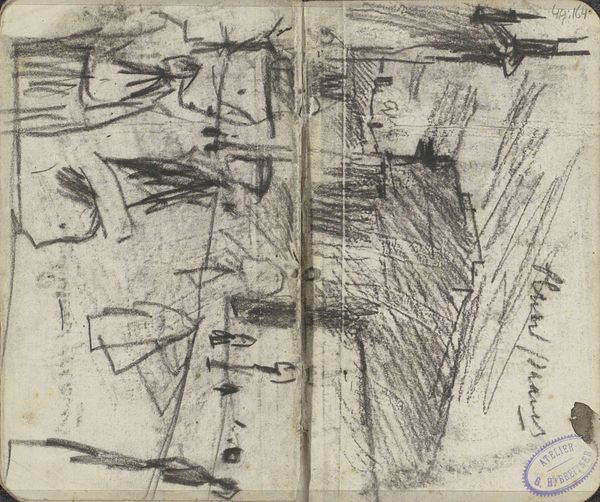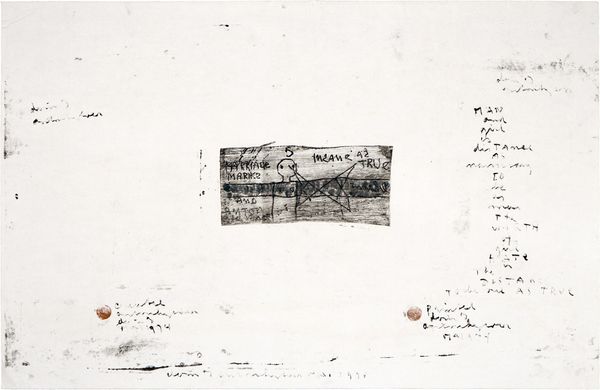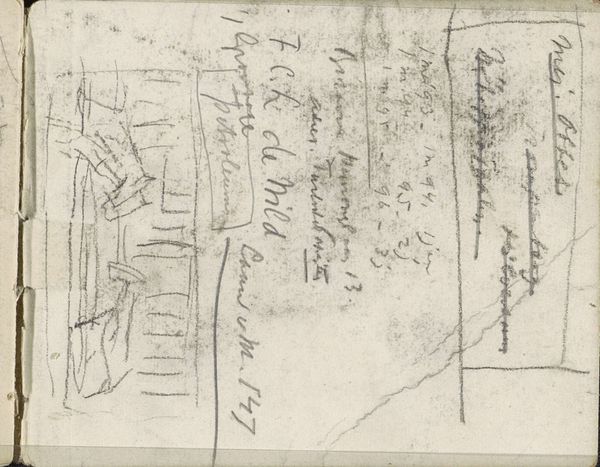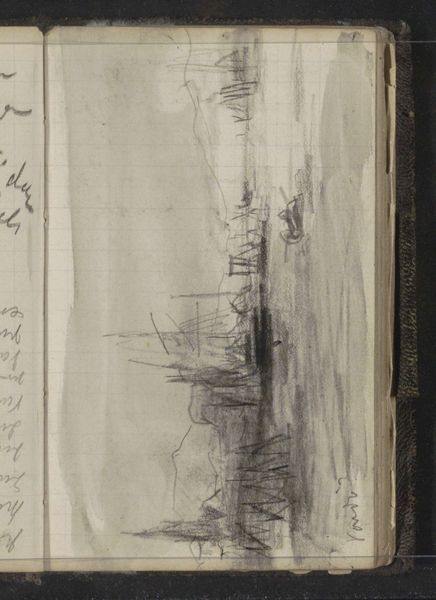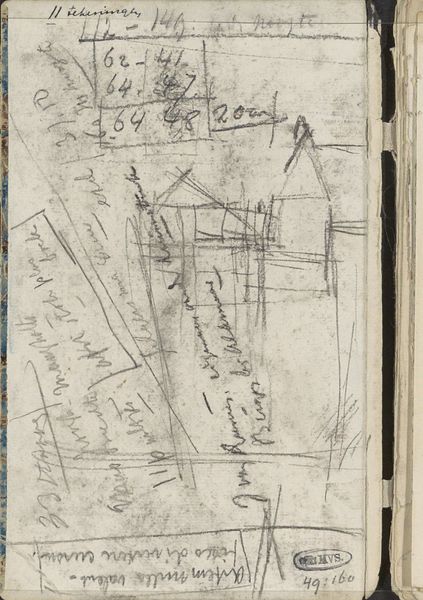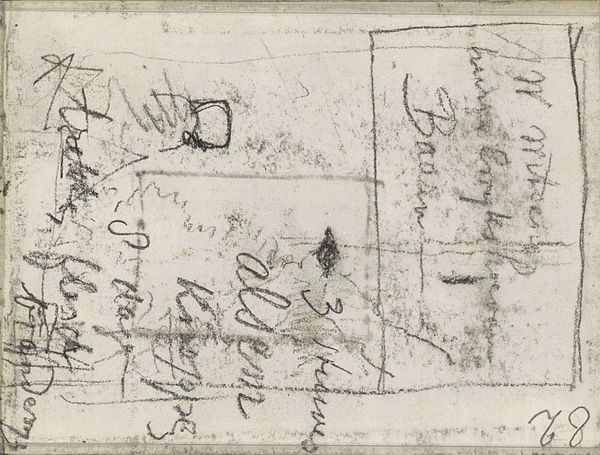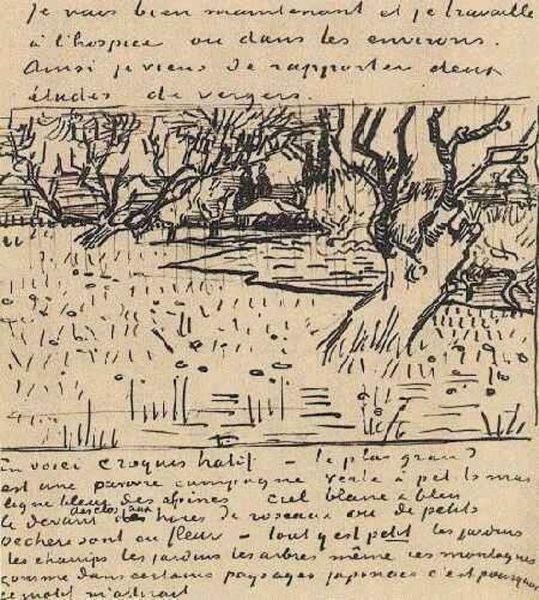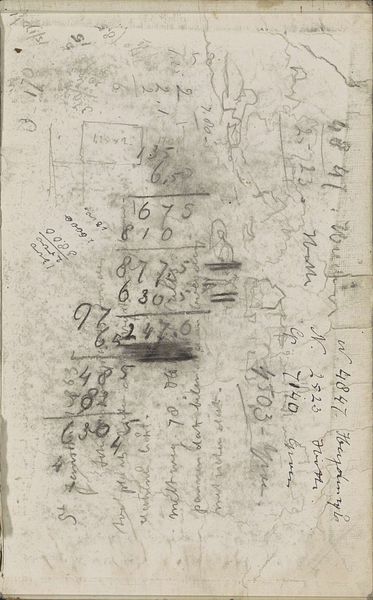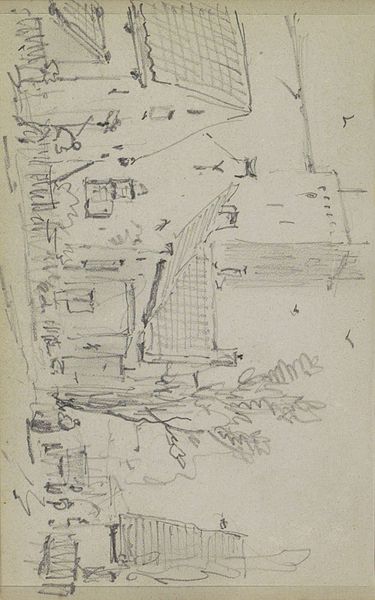
drawing, ink, pencil, pen
#
drawing
#
impressionism
#
pencil sketch
#
landscape
#
text
#
ink
#
hand drawn
#
pen-ink sketch
#
pencil
#
pen
#
cityscape
#
post-impressionism
Copyright: Public domain
Curator: Immediately striking, isn't it? This sketch from 1886 seems divided – an evocative street scene above, a mundane menu below. It creates a visual dichotomy. Editor: It does. It's intriguing how Van Gogh, known for his paintings, turned to pen, ink, and pencil for this 'Restaurant Menu'. I wonder about its purpose beyond the obvious commercial aspect. Curator: Well, think of Van Gogh's time in Paris. He was exploring new styles, new perspectives. The cityscape at the top, while quickly sketched, reveals his interest in Impressionism, capturing the fleeting moment, the bustling street life. Notice how figures almost dissolve into the background. Editor: I see them almost as shadowy figures. But it's the text, the actual menu, that intrigues me more. What did dining out signify in Parisian society then? What social rituals and class structures did it reinforce? Curator: The menu acts as a symbol itself – of bourgeois life, of leisurely consumption, and a stark contrast to the realities faced by many artists, including Van Gogh at times. It’s the world he observed but often stood apart from. Even the items themselves–“cervelet beurre noir,” "escargots"–these are specific emblems. Editor: It's almost as if he's documenting a foreign landscape within his own. The pen and ink become anthropological tools, recording cultural artifacts—the prices, the dishes, everything is social data. I am struck by the seemingly random "a la Corzetti" on there. It seems as if something personal may have interjected itself. Curator: That personal touch could offer hints of individual connections or tastes weaving into the scene, it might point to a patron's favorite or an emerging ingredient in restaurants that were trending that moment. Editor: So the piece isn’t just a sketch, but a loaded commentary? Van Gogh’s blending of public and private reveals how societal spaces were negotiated during a specific historical period. A humble menu then takes on weight as social testimony. Curator: Exactly. Through a deceptively simple format, it bridges observation and insight, prompting thoughts on culture, class, and fleeting impressions– all framed by Van Gogh's incisive gaze. Editor: It is interesting how what seemed a somewhat simple work can say a lot when viewed under different prisms. I came away considering it from different angles of understanding.
Comments
No comments
Be the first to comment and join the conversation on the ultimate creative platform.
